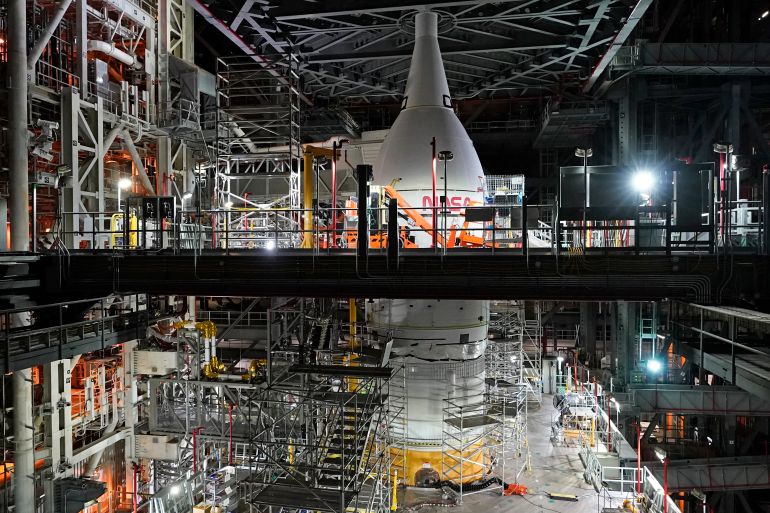NASA delays astronaut moon landing to 2025 at earliest
Lack of funds, legal wrangling cause NASA to postpone plans for first astronaut moon landing in more than 50 years.

The United States space agency, NASA, has delayed sending astronauts back on the moon until 2025 at the earliest – jettisoning a deadline set by the administration of former President Donald Trump.
NASA had been aiming for 2024 for the first moon landing by astronauts since the Apollo 17 mission made a lunar landing in 1972. The aggressive goal, set by the Trump administration, was part of the agency’s Artemis programme, which seeks to use the moon landing and creation of a long-term colony as a stepping stone for a far more ambitious Mars mission.
Keep reading
list of 3 itemsMoon ‘wobble’, rising seas to cause flooding surge: NASA
How NASA’s shuttle shaped space travel 10 years later
However, NASA Administrator Bill Nelson said on Tuesday that the US Congress did not provide enough money to develop a landing system for the Artemis programme and that more money was also needed for the development of the Orion capsule, the spacecraft that would make the trip.
Nelson also said that legal wrangling has also slowed the plans. A legal challenge by Jeff Bezos’s rocket company, Blue Origin, that challenged the US government’s decision to award Elon Musk’s SpaceX to build its Starship lunar landing system for the initiative delayed development for months.
The lawsuit was rejected by a judge last Thursday.
“The human landing system is a crucial part of our work to get the first woman and the first person of colour to the lunar surface, and we are getting geared up to go,” Nelson told reporters. He added that the Trump “target of a 2024 human landing was not grounded in technical feasibility”.
NASA is still targeting next February for the first test flight of its moon rocket, the Space Launch System, or SLS, with an Orion capsule. No one will be on board.
Instead, astronauts will strap in for the second Artemis flight, flying beyond the moon but not landing in 2024, a year later than planned. That would bump the moon landing to at least 2025, according to Nelson.
Nelson also acknowledged China’s ambitious and aggressive space programme, and warned it could overtake the US lunar exploration.
“NASA is committed to help restore America’s standing in the world,” he said.
‘By any means necessary’
During a National Space Council meeting in 2019, Vice President Mike Pence called for landing astronauts on the moon within five years “by any means necessary”.
At the time, Pence said the US was in a new “space race,” borrowing terminology from the 1960s Cold War era, to counter the potential space weaponry capabilities of Russia and China.
At the time, NASA had been aiming for a lunar landing in 2028, and pushing it up by four years was considered exceedingly ambitious, if not impossible.
Nelson said the agency is going to be “as aggressive as we can be in a safe and technically feasible way to beat out competitors with boots on the moon”.
He added that Congress will need to increase funding, beginning with the 2023 budget.
Since 2020, NASA has launched three astronaut crews aboard SpaceX rockets to the International Space Station, with a fourth mission expected in orbit as early as this week.
On December 1, Vice President Kamala Harris will convene her first National Space Council meeting, on which she serves as chair.
Nelson said he updated her on the latest schedule and costs during their visit to Maryland’s Goddard Space Flight Center on Friday.
The US Apollo programme sent six human missions to the moon from 1969 to 1972, the only crewed spaceflights yet to reach the lunar surface.
Since then, the immense cost – and political risk – of launching another years-long mission to the moon has largely discouraged elected officials from spearheading the undertaking.